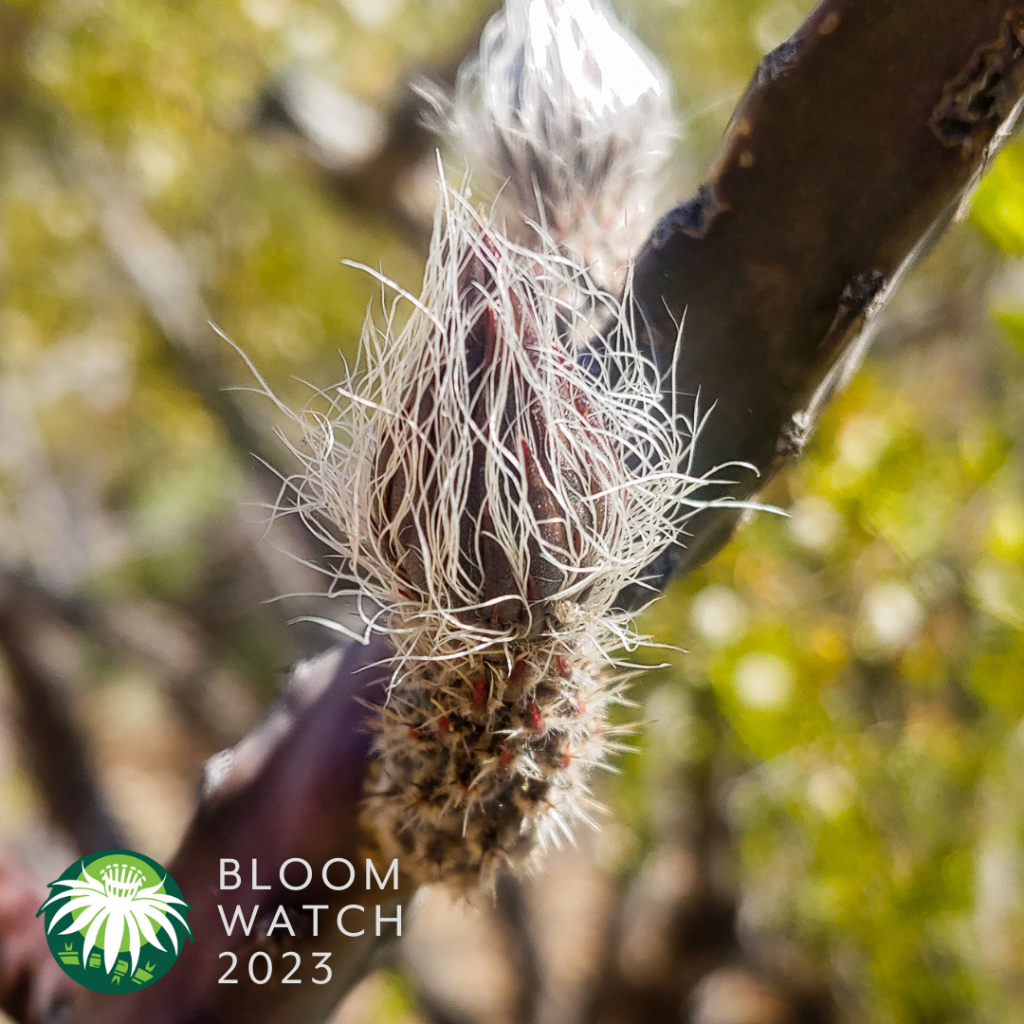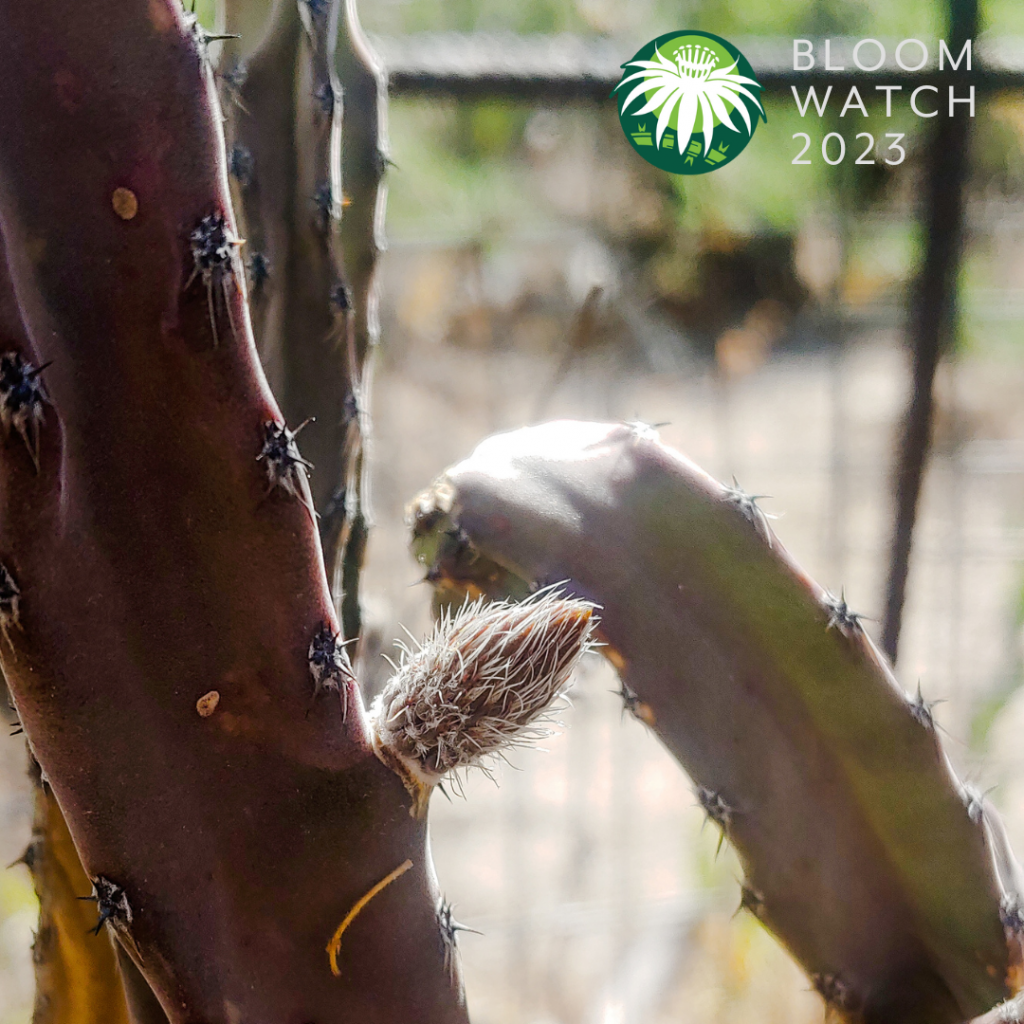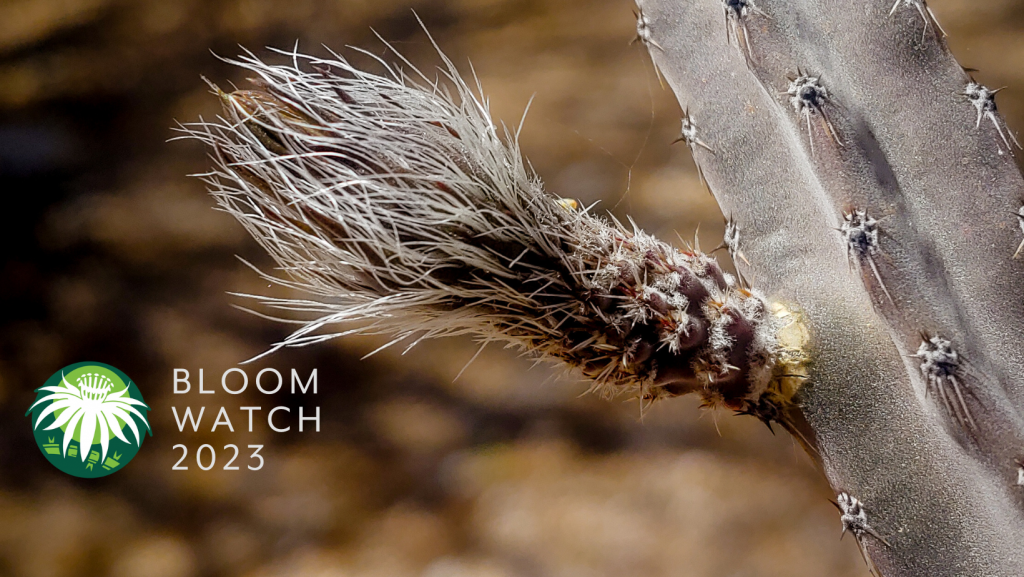
Bloom Watch #2
June 2, 2023Slow & Steady
Garden member Beverly’s, Queen (pictured below) surprised her when it bloomed last Friday night; a few weeks earlier than last year. She says she’s going to watch closely as the fruits develop over the following months. Every year there are early birds like this that bloom and remind us that summer is nearly here.
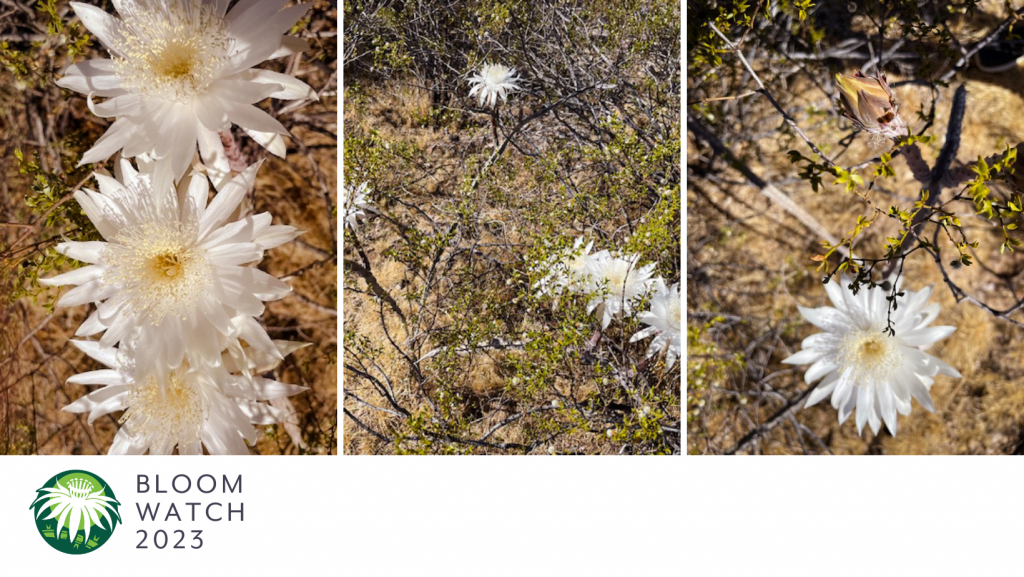
Back at Tohono Chul, the Queens are growing incrementally. Some of the tiny, fuzzy buds are becoming cylindrical as they become new cactus arms while other buds are becoming delicately pointy and growing long white hair as they prepare to become regal flowers.
Bloom Watch is a delightful chance to take a magnifying glass to these plants. But doing that alone wouldn’t give you the whole picture of who they are.
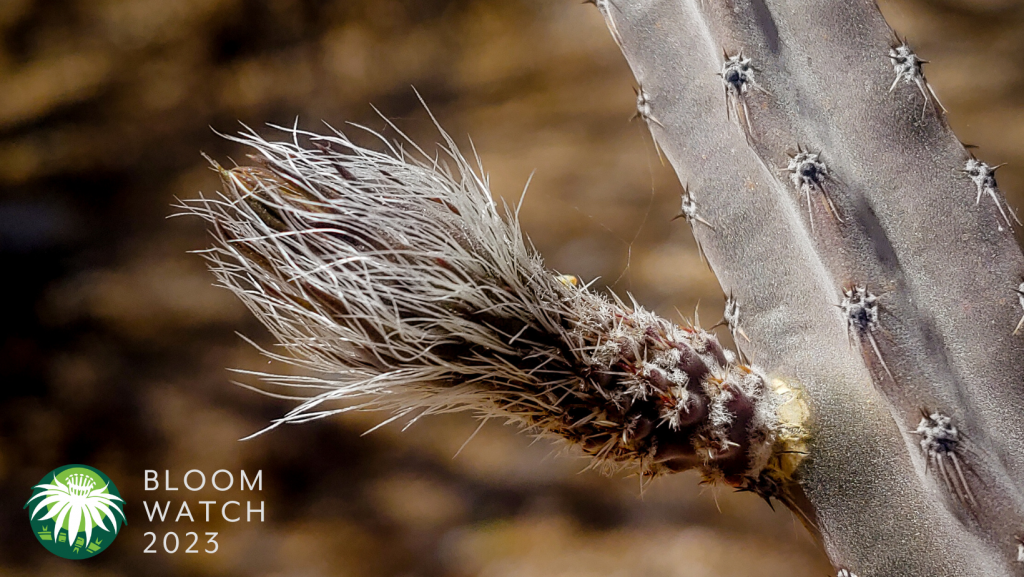
The Queen of the Night, Peniocereus greggii, is more than just a species, but a plant community, or more specifically, a population. A population is made up of organisms of a species that live in the same place at the same time and interbreed. We can reflect on this as we prepare to observe the communal adaptation of synchronous flowering.
If you look closely, you can see in the photos below of flower buds from different Queens taken throughout the garden at the same time that the buds are at different stages of development. However, the plants with bigger buds need to wait for most in their area to catch up. At least if they want to be successfully cross-pollinated by desert insects and bats. But why? In the wild, these plants can be growing miles apart. By synchronizing their efforts, they can increase the likelihood that a pollinator will make it from one individual to the next.
But this begs the question, why not just self-pollinate in that case? Then you’d be sure to produce seeds right?
There’s no conclusive answer. However, the benefits to the plant population might outweigh the benefit of an individual’s success. Cross-pollination produces genetically diverse seeds that may be more likely to adapt to variable environmental conditions. If you walk along the Desert View Trail and see the Queens, their diversity is evident in their distinct branching patterns and shapes of their stems. When Bloom Night comes, you may notice the subtle differences in flower color, size, and shape between individuals.
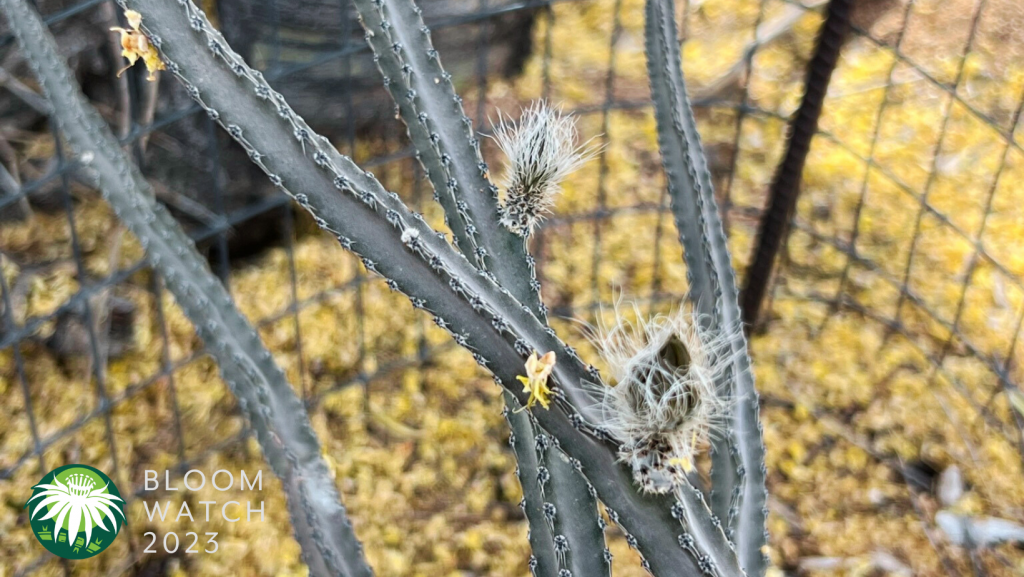
In addition to genetic diversity, the higher number of seeds produced at once can increase the chance of their successful germination the next time the weather is just right. Humidity in the desert is rare and it’s necessary for cactus embryos to pop out of their seeds and start to grow. The synchronized bloom events may have evolved to give the next generation of cacti a better chance.
Sign up for Bloom Watch emails here. Be sure you select “Bloom Watch” on the dropdown menu!


